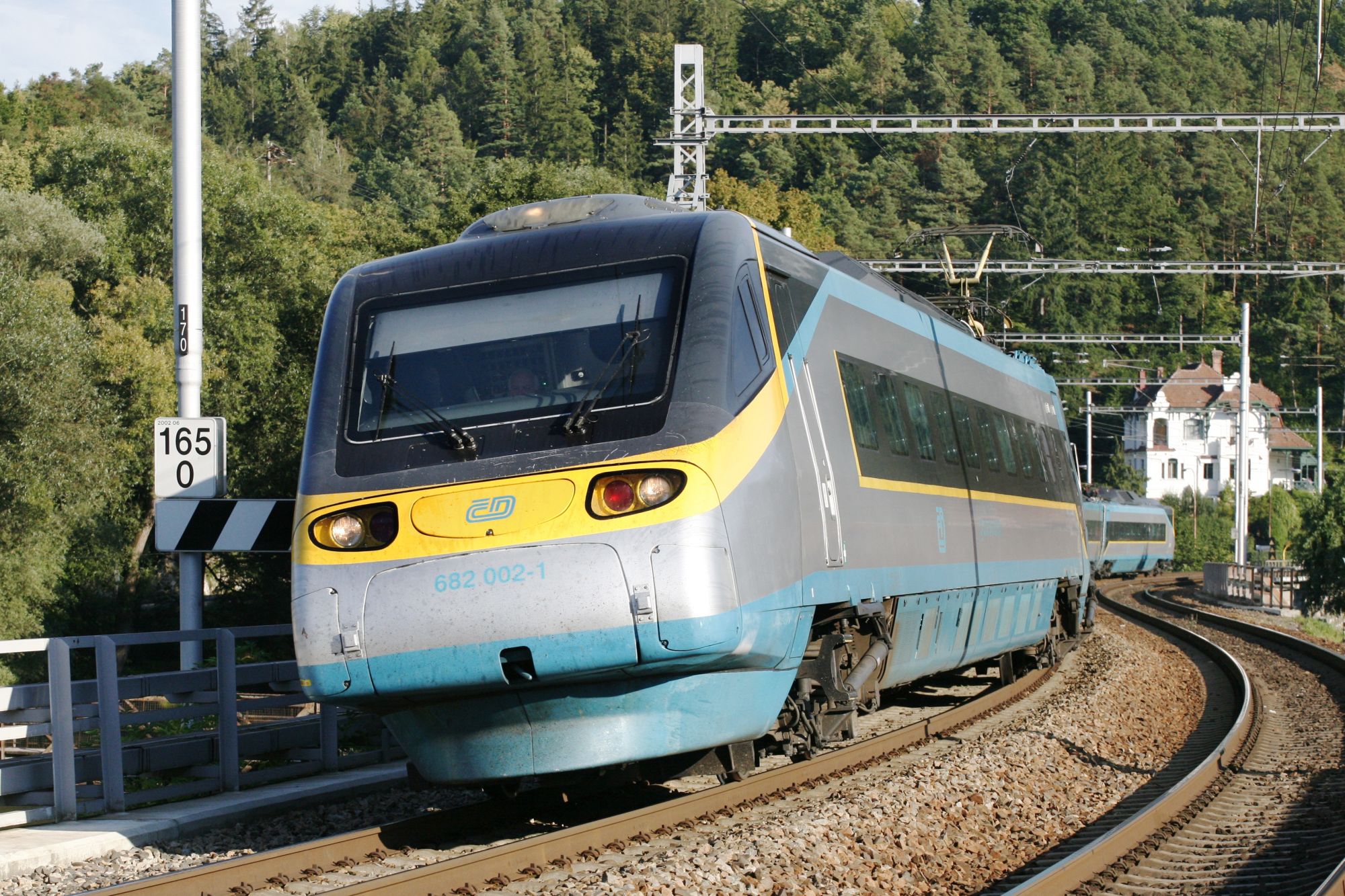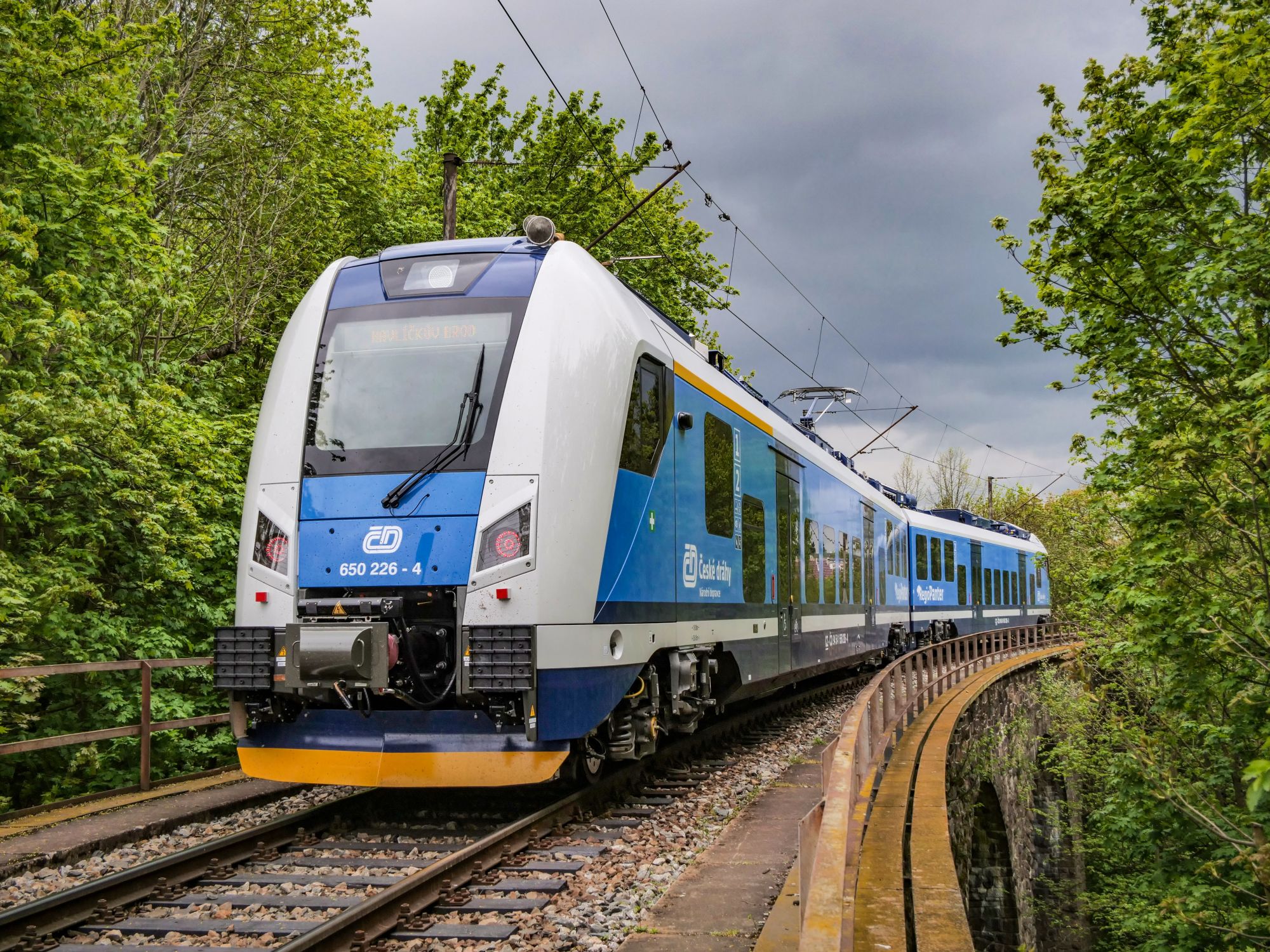On 27 August 1964, the Albatros steam locomotive set a new Czechoslovak speed record of 162 km/h on the VUZ test track circuit near Velim. This record-breaking value has been a daily part of railway operation in the Czech Republic for a quarter of a century. The maximum speed of 160 km/h is reached by hundreds of trains from SC Pendolino to passenger train services on 933 kilometres of Czech and Moravian railway lines.
It happened in 1964 when foreign railway undertakings were testing new types of carriages on a brand-new railway testing ground near Velim, even before its electrification had been completed. These were already designed for a maximum speed of 160 km/h. This speed had to be reached and surpassed during the tests. For the purpose of the tests, ČSD provided its most powerful and fastest 498.1 class steam locomotives from the Bratislava depot. The engines with numbers 106 and 115 were practically at the head of the test train sets for the whole year.
When the end of the summer holidays was approaching, there were speed tests on the track test circuit. Thanks to this fact, on 27 August 1964, the locomotive 498.106 driven by the driver Róbert Procházka and the fireman Miloslav Houba at the head of a train consisting, besides the engine, of a pair of cars reached a record-breaking speed of 162 km/h. A new Czechoslovak railway speed record was thus set. It is reported that at the beginning of September the second engine reached an even higher speed and approached the 170 km/h mark, but due to a device malfunction this value has not been officially confirmed.
A quarter of a century on the Czech railway lines at a speed of 160 km/h
What was a record-breaking event for the Czechoslovak railway sector 60 years ago has become a daily routine for České dráhy in the 2000/2001 timetable. First, eight EuroCity connections from Prague to Břeclav and onwards to Austria, Slovakia and Hungary started running at 160 km/h. One of the first fast sections was between Brno and Břeclav and is still one of the fastest places on the Czech railway network. The first "fast trains" were the Antonín Dvořák, Vindobona or Hungaria services.
Currently, hundreds of České dráhy trains from SC Pendolino to regional passenger trains have a maximum speed of 160 km/h. According to the statistical yearbook of Správa železnic (Railway Administration, the railway infrastructure manager), at the end of last year the Czech railway network had 933 kilometres of railway lines for the speed of 160 km/h. In addition to the corridors from Prague to Ústí nad Labem and České Budějovice, from Brno to Břeclav or from Břeclav to Přerov, the corridor Prague – Pardubice – Olomouc – Ostrava is the main one. It is also possible to run on other railway lines at a speed of one hundred and sixty, e.g. between Pardubice and Hradec Králové, from Olomouc to Uničov, on the Pilsen corridor, on the railway line from Ostrava to the Slovak border, or on the railway line through Vysočina (Highlands).

For speeds of at least 160 km/h, České dráhy has more than 260 traction vehicles and almost 900 passenger cars. A large number of these vehicles can even run at speeds of 200 km/h or more. Within the framework of international cooperation, the national carrier also uses locomotives and carriages of foreign partners, e.g. from Austria, Slovakia, Hungary or Poland, for fast trains.
The fastest trains in the Czech Republic
The travelling, i.e. average, speed of Czech trains is heavily influenced by the passage through railway junctions, where the speed is usually lower, the passage through very busy sections, where the speed has to be adapted also to slower trains, e.g. regional stopping services, and also slower sections of corridors in the valleys of our rivers, e.g. along the Vltava, Elbe, Orlice or Svitava rivers. In these places, the railway line speed is usually around 80 to 100 km/h.
Because of this fact, our fastest trains rj 374 Vindobona and EC 271 Metropolitan run at such speeds only in the short section between Břeclav and Brno, where the speed of 160 km/h is allowed on 89% of the railway line length between the two stations. The fastest trains are also those running on the first railway corridor with a high proportion of high speeds. The SC Pendolino trains then illustrate how passing through railway junctions can slow trains down. While between the centre of Prague and Ostrava the Pendolino reaches a cruising speed of "only" 113 km/h, the cruising speed between stations on the outskirts of the city centres, which are Ostrava-Svinov and Prague-Libeň, reaches 119 km/h.
| The fastest trains in the Czech Republic | ||
|---|---|---|
| Route | Train(s) | Travel speed (km/h) |
| Břeclav – Brno hl.n. | rj 374 Vindobona | 122 |
| Brno hl.n. – Břeclav | EC 271 Metropolitan | 118 |
| Praha hl.n. – Ostrava hl.n. | SC Pendolino | 113 |
| Opava východ – Praha hl.n. | Opavan | 112 |
| Praha hl.n. – Pardubice hl.n. | Jan Perner | 104 |
| Břeclav – Praha hl.n. | rj Vindobona / EC Metropolitan | 102 |
| Praha hl.n. – České Budějovice | Jižní expres | 100 |
For trains to achieve such high travel speeds along their entire route, the section (average) speeds between two adjacent train stops must be even higher. These include starting and braking, but are no longer affected by the length of stay at the station. The highest average speeds between two stops are, for example, on the sections Pardubice – Kolín (140 km/h), Olomouc – Zábřeh na Moravě (131 km/h), Staré Město u Uherského Hradiště – Hodonín (127 km/h), Choceň – Pardubice (124 km/h), Brno – Břeclav (up to 122 km/h) or Ostrava-Svinov – Hranice na Moravě (120 km/h). There are also very fast sections in Southern Bohemia. For example, the "slower" express trains reach a section speed of 111 km/h between Tábor and Olbramovice and reach an average speed of 105 km/h on the short, only 7 km long section between Veselí nad Lužnicí and Soběslav.
